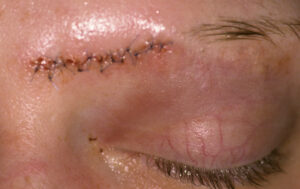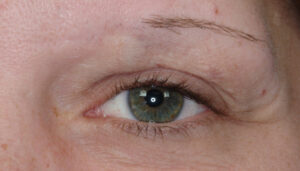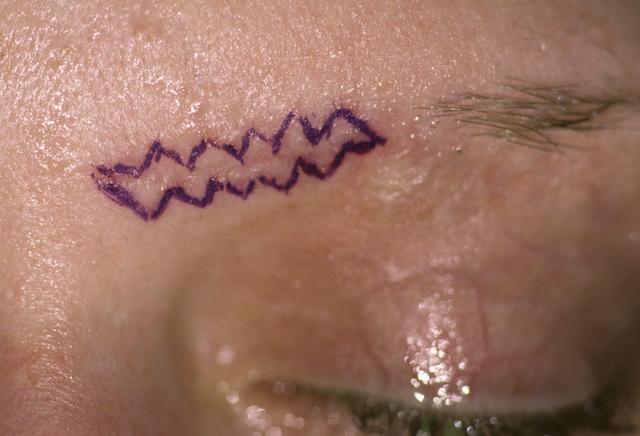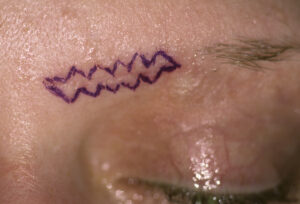Background: Soft tissue trauma is not uncommon around the prominent brow bone region of the upper third of the face. When the eyebrow soft tissues are compressed against the edge of the brow bone usually the soft tissue will separate before the bone fractures creating a laceration. Because this laceration involves a hair bearing area, eyebrow lacerations frequently exhibit hair loss as well.
Another type of injury that can occur from eyebrow and eyelid lacerations is upper lid ptosis. If the levator aponeurosis is injured by an eyelid laceration or shearing forces across the eyebrow its attachment to the tarsus may be affected. This will cause the level of the upper eyelid to droop, increasing coverage of the upper iris giving it a sleepy or tired appearance.
Case Study: This female was involved in a severe automobile accident which resulted in extensive lacerations of her face. One of these lacerations involved the left eyebrow area and resulted in a depressed horizontal scar and left upper eyelid ptosis.


Case Highlights:
1) Prominent linear scars that cross the brow bones will usually benefit by a geometric scar revision.
2) Traumatic soft tissue injuries to the eyelid can cause upper eyelid ptosis.
3) Eyelid scar revision and upper eyelid ptosis repair can be done during the same surgery.
Dr. Barry Eppley
Indianapolis, Indiana





